Peru Day 5
At breakfast, Jan begins a conversation with a young couple in the Villa Urumbamba dining room and asks where they are from. “Lima,” says the man in accent-free English, “we’re here to celebrate New Year’s Eve.”
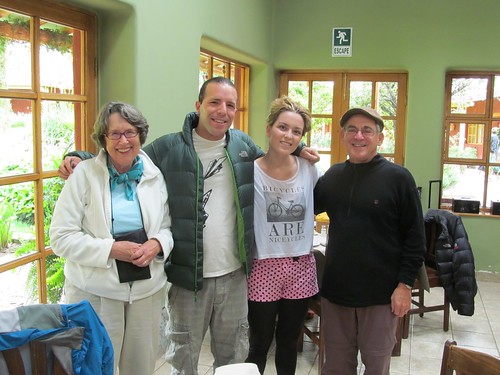
She says we’re from San Luis Obispo California. He says he’s been there to visit his aunt who was a physician with Doctors Without Borders recently killed in a plane crash. Jan says she’d met her once and we both attended the funeral of her volunteer pilot, whom we knew as an environmental activist.
Like our son Joe, Pacifico is a mountain bike and offroad motorcycle enthusiast, and head of the Lima Mountain Bike Association, which is now big enough to afford him employment. His partner, Maria, is a fashion designer. He shows me his bike and points out the trail on a distant hillside that he’s built by himself.
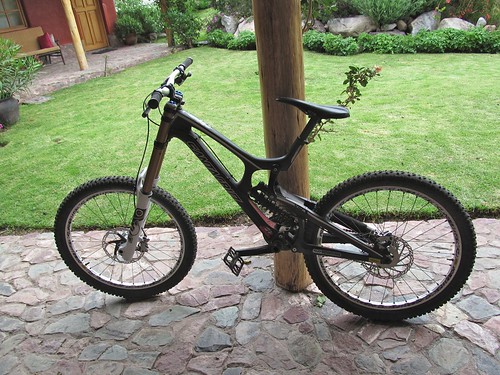
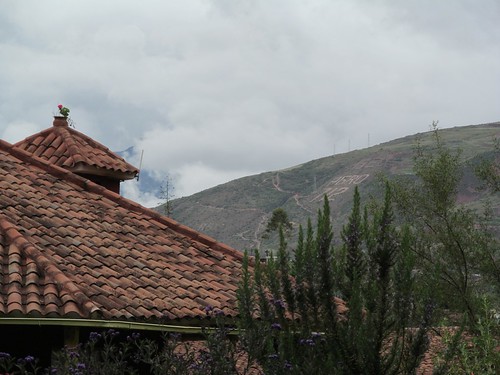
Ruefully we leave this beautiful enclave and head back to Ollantaytambo to catch the train for Machu Picchu. On the way we stop at a house marked by a red plastic bag on a stick, the sign for a chicha bar, one of the several found in all rural villages.
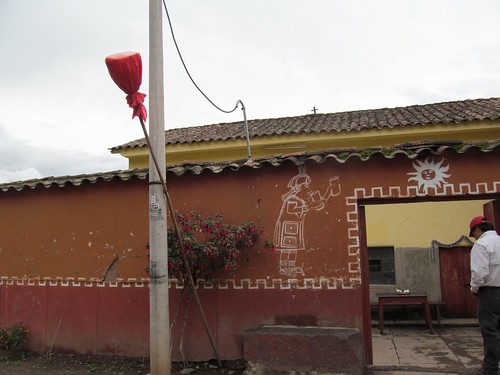
The doorway is painted with a design copied from an ancient inscription. Long before the Inkas, this form of corn liquor has been a staple of the Andean pharmacopeia and diet, just like the coca leaves on the figure’s headress.
In the courtyard, Alvaro shows us the bar game of Sapo, which involves tossing heavy bronze disks into the mouth of the frog and various other orifices. I enjoy playing, even though my aim has always been terrible.
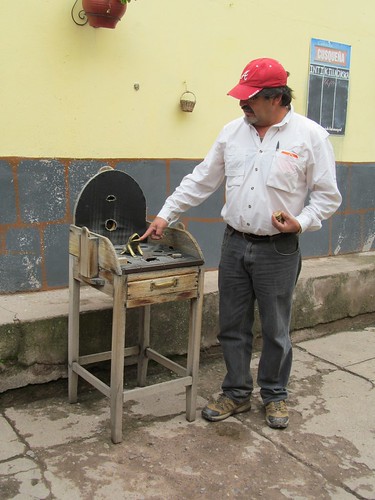
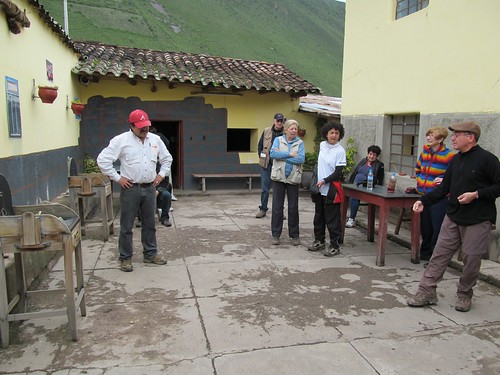
Inside another kitchen that seems like a museum display, we are introduced to the brewer-hostess.
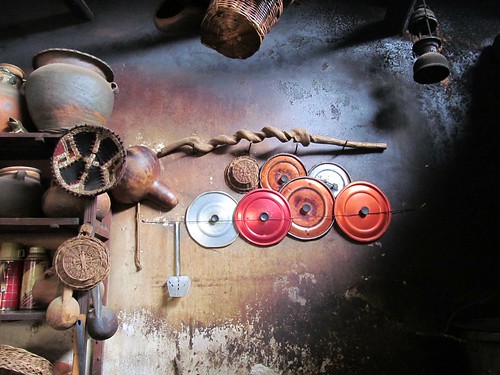
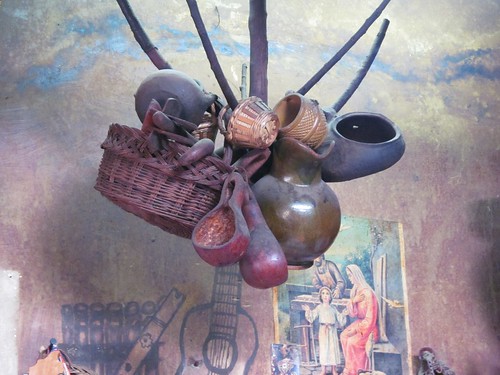
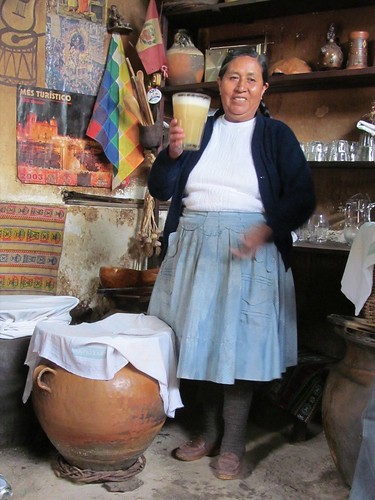
She demonstrates the process of making chicha: sprouting corn kernels, fermenting them, filtering and stirring the brew in large clay pots and ending up with the either the cheap plain or the more expensive variety flavored with strawberries.
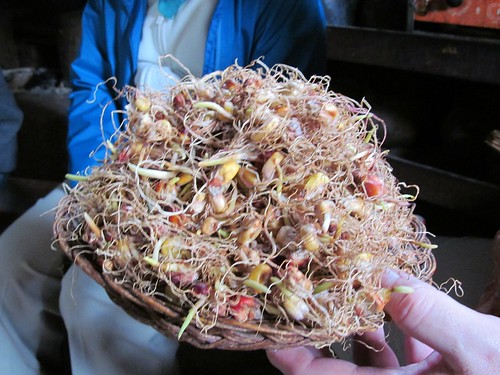
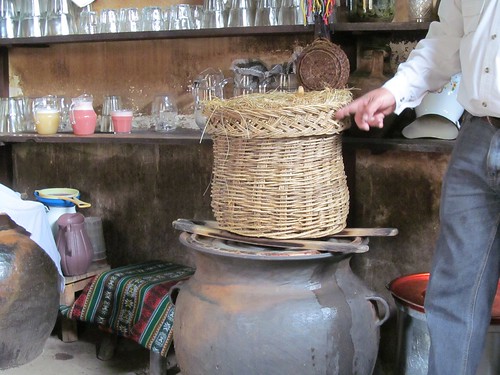
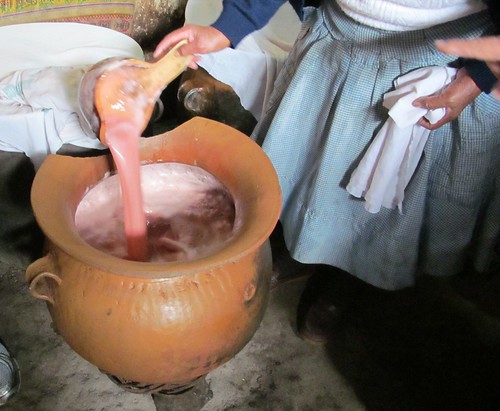
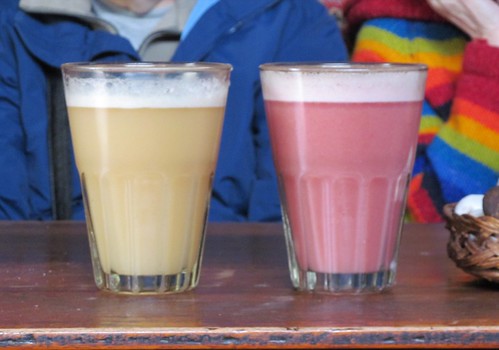
Peruvians are known to drink it by the half gallon, but we each only take a sip, reluctant to imbibe anything that might weaken tolerance for the altitude.
Near the bathroom at the back of the bar, we discover another little guinea pig barn, a lovingly arranged tool-storage wall, and a quinoa plant, which I’ve never seen, even though I eat a lot of this Peruvian staple.
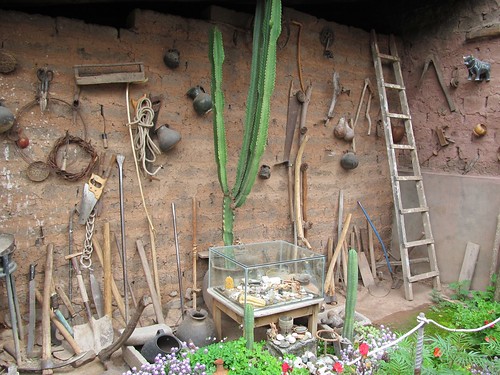
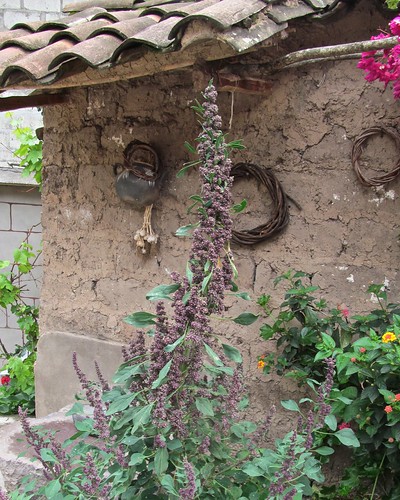
Alvaro stops the bus again to grab some beetles infesting a prickly pear cactus by the side of the road. He crunches them on a sheet of paper to reveal the source of cochineal, the red pigment used as a fabric dye, cosmetic, and wall paint.
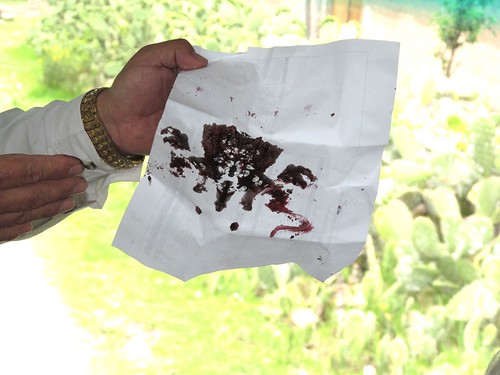
At Ollantaytambo, we board the train that travels beyond the end of the road down the narrowed Urumbamba valley, now a canyon. We pass a footbridge at the start of the Inca Trail, the beginning of a four-day trek to Machu Picchu on the old stone road which now requires advance registration, a guide and porters.
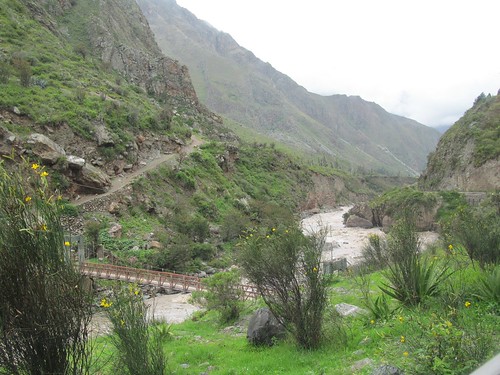
Another footbridge rests on original Inka piers. As we descend in altitude the surrounding vegetation turns to thick tropical jungle.
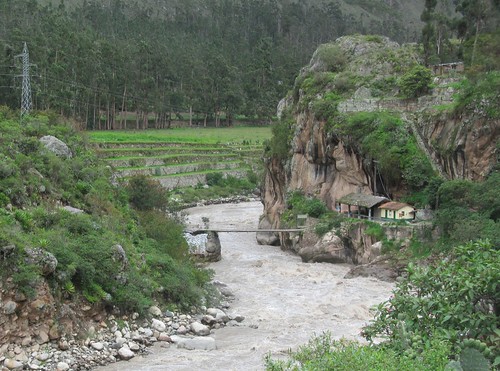
The railroad terminus is Aguas Caliente, a bustling tourist town on either side of the tributary that dashes down from fog-enshrouded peaks to converge with the Urumbamba.
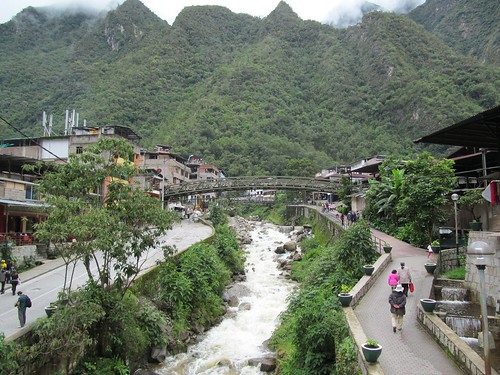
There we meet “little Alvaro,” another licensed guide who assists our Alvaro, and we board one of a steady stream of buses carrying visitors up the “Hiram Bingham highway,” named after the Yale explorer who claimed to discover the ruins of the lost city in 1911. In fact, they were shown to him by local farmers who lived on the site, but Bingham must share credit with Pachacuti the original builder for creating an economic bonanza for later generations.
As the river shrinks to a narrow ribbon below, surrounding mountains break through the clouds.
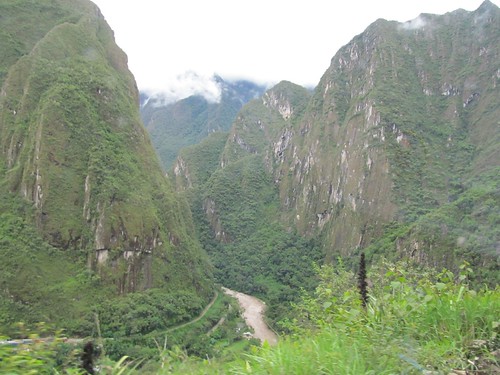
Then we’re off the bus, through the mass scene at the entrance kiosk where passports must be shown and the $60 entrance fee paid, and out on a terrace for the first view of the place. Though I’ve seen it on countless brochures and billboards, nevertheless here in person, it shuts the mouth, quiets the brain, and fills the eyes with wonder. Walls, terraces, houses, temples, the jungle, the clouds above, the adjacent summit of Huayna Picchu, the peaks rising from the river below, the myriad miniscule people–all that variety in a unified three dimensional panorama.

After the initial impression of the whole, I take in more of the specifics: steep agricultural terraces and drainage corridors,
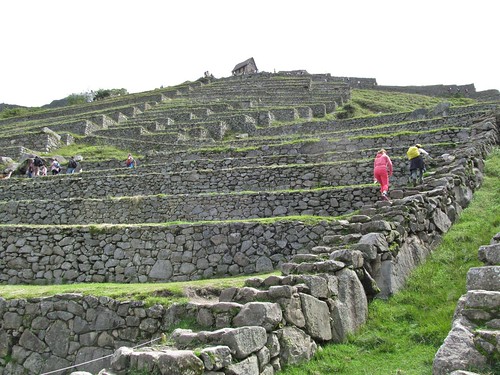
waterfalls tumbling out of the cloud forest,
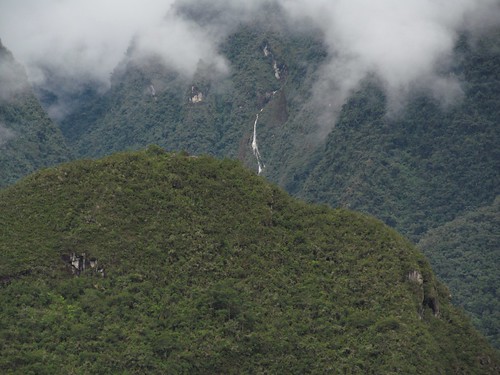
structures hewn out of and bedrock and grafted onto it,

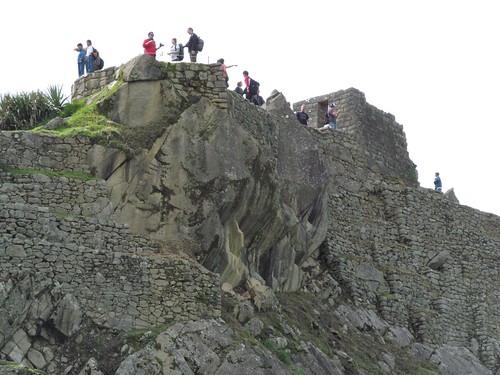
Huayna Picchu peak chiseled with staircases and topped with temples,
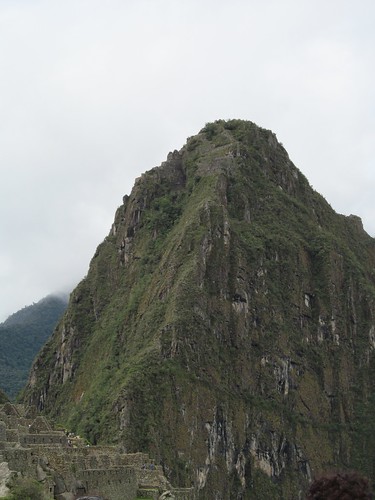
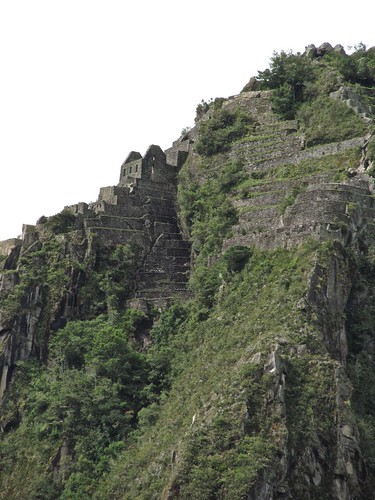
animals domestic and wild.
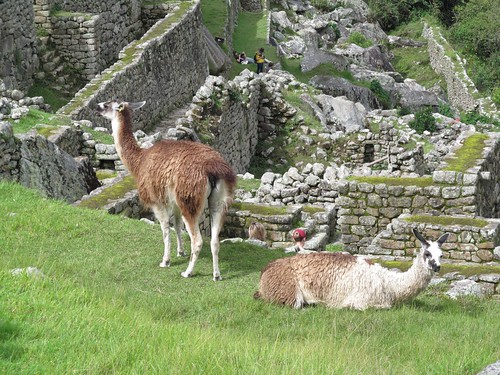
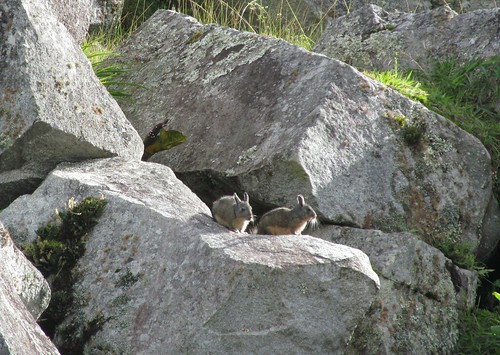
Despite the rainy season, the weather is dry and the clouds are clearing. Alvaro’s prayers have worked! He leads the group to the Temple of the Condor, a dazzling statue of one of the three sacred beasts of the Inka, representing the realm of the sky, and also a site for sacrificial offerings.
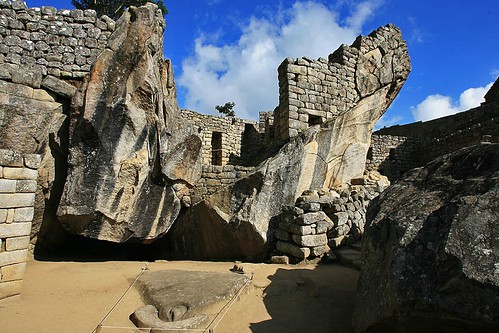
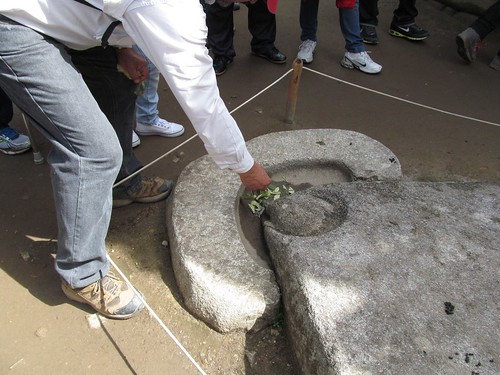
He says his prayer, offers some coca leaves, and distributes mouthfuls to the rest of us. The sun comes out, revealing the primary deity the Inka worshipped.
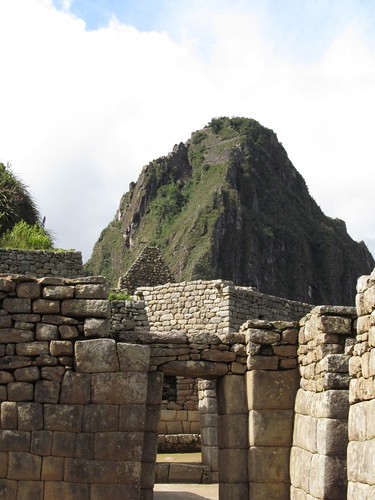
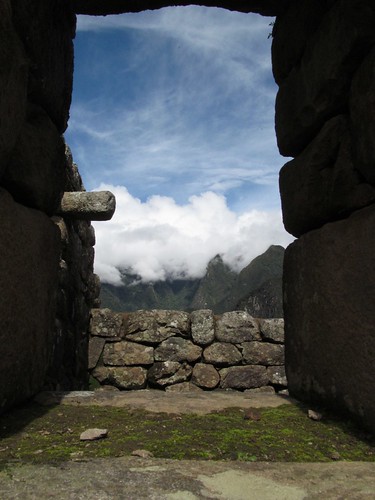
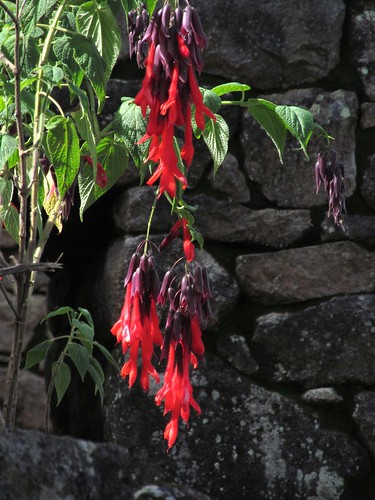
He impresses upon us their aesthetic appreciation, their scientific observation, and their spiritual responsiveness to the natural environment. Here a stellar observatory in protected reflecting ponds
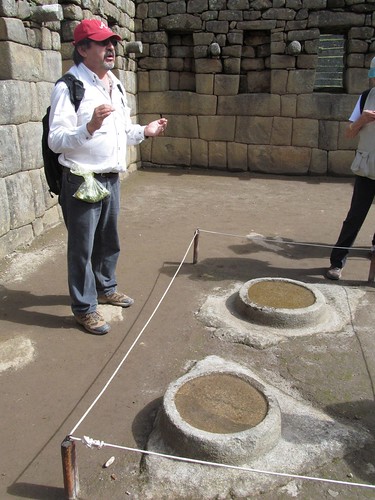
Here a carved imitation of the peak behind it
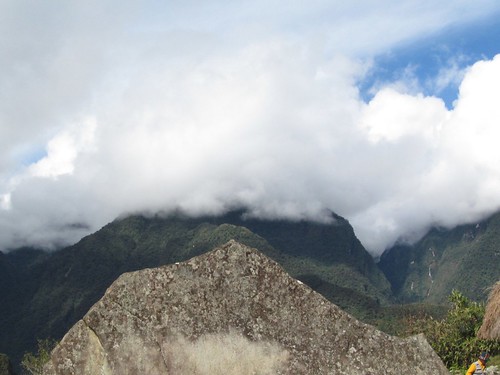
Here, at the zenith of the site, a sundial.
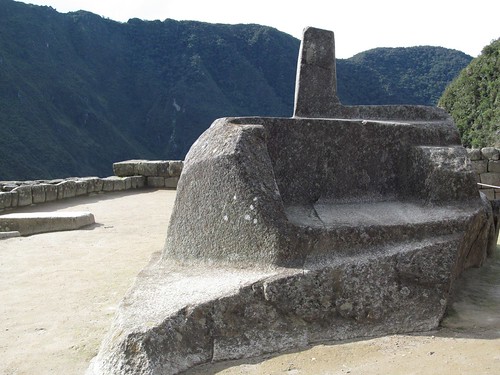
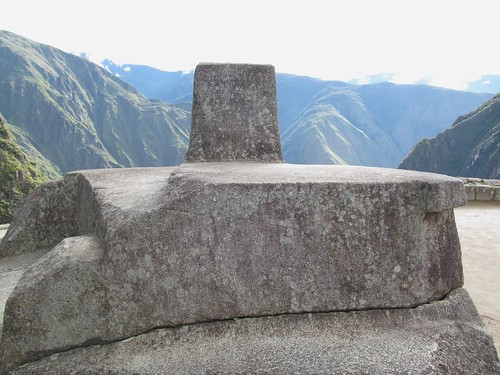
In front of Mount Machu Picchu, we stop for a group portrait–travellers from Vermont, Massachusetts, New York, Pennsylvania, Illinois, Arizona, and California.
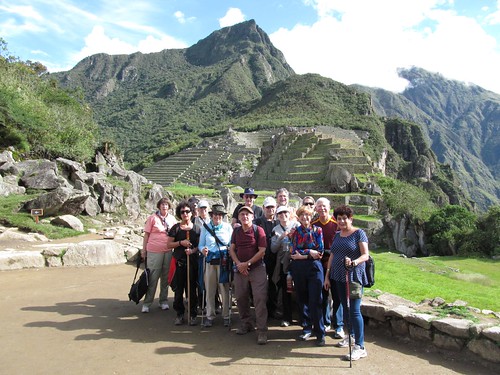
At the base of the southwest side of the ridge, the river twists downstream.
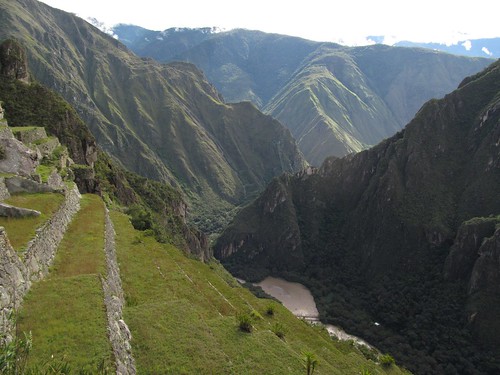
To the northwest, peaks of the Cordillera momentarily appear thousands of feet above us.
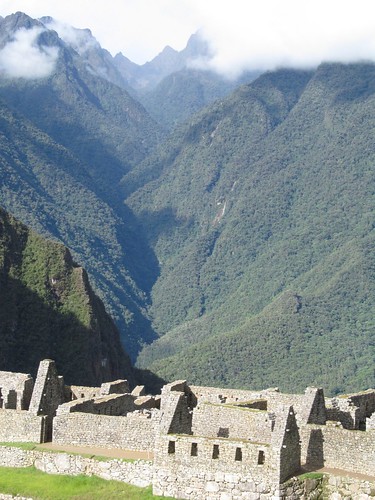
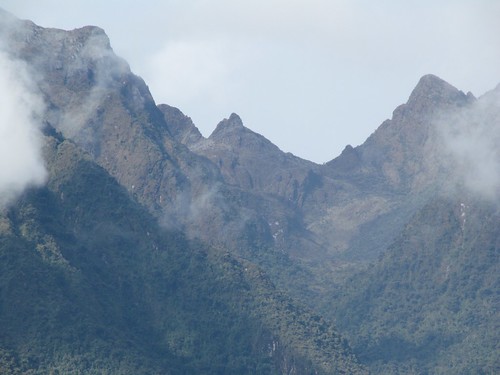
The most polished masonry of Machu Picchu is reserved for the Temple of the Sun, a structure twinned by Korikancha, a temple in the middle of the city of Qosqo and aligned with it along a mysterious network of meridians.
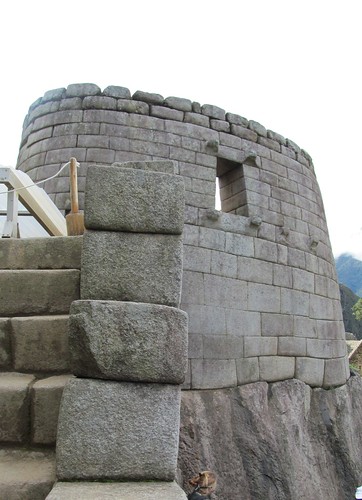
The temple perches on a rough rock face above a cave used for the preparation of mummies which represents the underworld realm of the dead, presided over by the snake god.
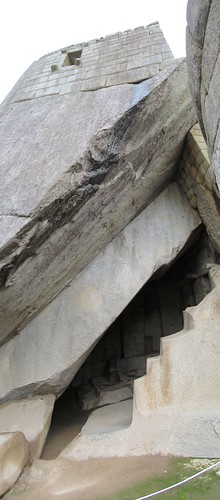
As we head back to the entrance late in the day, the contrast deepens between shadow and light. Color, shape and texture take on intoxicating intensity.
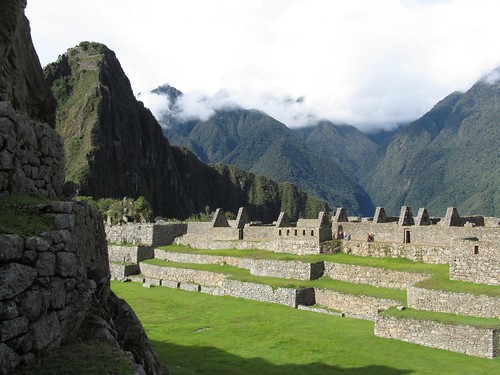
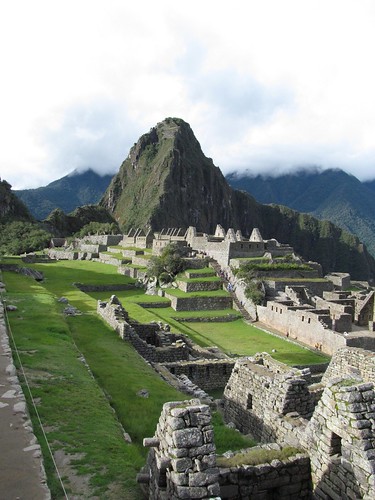
Down in the valley, we walk to dinner at a gaudy restaurant where we’re serenaded by a lively group of traditional musicians. The we check in for the night at a friendly little hotel.
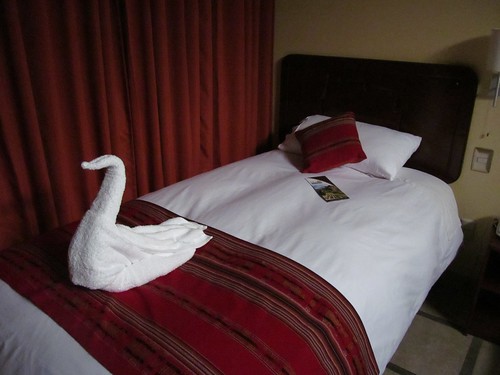
Slideshow of these and more full size photos
